 |
| 1. Transport in the Urban
Areas As covered in Chapter 1, while in Japan's urban areas1 public transport such as trains and buses plays a key role in meeting the needs of people commuting to work and school, except for the most concentrated areas such as the Tokyo urban district, the reliance on motor vehicles is still as strong as ever. |
Modes of Transport in Japan's three Major Urban Areas (1997) |
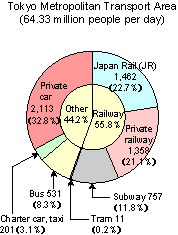 |
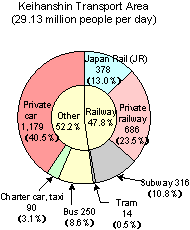 |
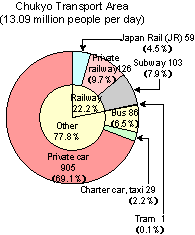 |
|
| Source: Compiled from the Ministry of Transport "Annual Report on Urban Transport" | |||
Advance in Dependence on Automobiles (changes in the numbers of trips per head of population) |
| [Tokyo urban
area] While major increases have occurred in the use of bicycles, 4.9 times and rail, 1.5 times, the use of automobiles has only increased 1.1 times and walking as a means of transport has greatly decreased. |
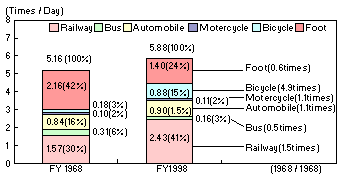 |
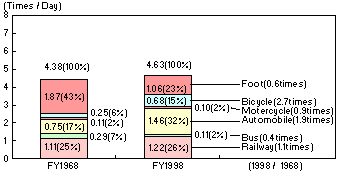 |
[Tokyo Metropolitan
Area] Increases have occurred in the use of automobiles, approximately 1.9 times and bicycles, 2.7 times, walking and the use of buses has decreased. [Tokyo Metropolitan Area] Tokyo, Saitama, Chiba and Kanagawa. |
|
| Source: Complied by Ministry of Transport from Tokyo Metropolitan Area Transport Scheme Council "Tokyo Metropolitan Area Person Trip Survey" |
||
|
|
PREVIOUS |
|
TOP |
|